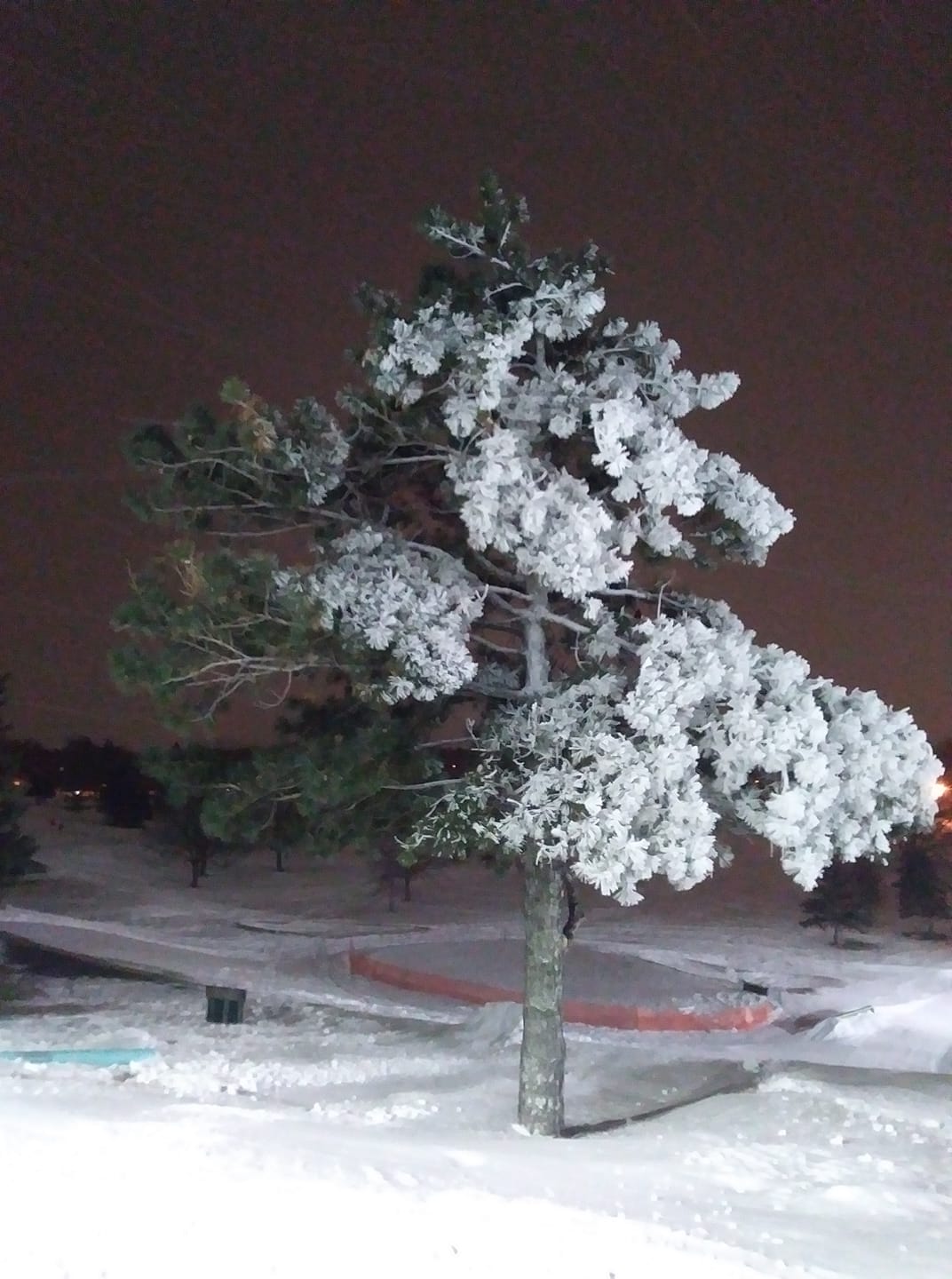JANUARY 29, 2020 – Every evening during winter, I enjoy Little Switzerland. For years I’d ski the groomed, 5 km course. After several bad snow years, I adopted the habit of skiing repeatedly just the portion that included two good hills.
This season, however, involves a new routine. I ski the groomed trail only to the backside of what I call “St. Moritz”—in reality, “Mt. Como”—with a vertical rise of 60 feet. Rope tows whisk young downhill skiers to “the summit.”
The frontside is where all the action is. It faces the clubhouse . . . er, “Geneva” . . . about 300 meters away. Ski classes and observant parents crowd that side of the “mountain.” The backside, which is steeper, hosts more advanced junior skiers . . . and me.
The cool thing about the backside is that it’s well-groomed and fully lit when “St. Moritz” is open for night skiing, yet often the rope tows there aren’t running—thus, no traffic. These perfect conditions allow me to skate-ski right up the middle, alternating between the two slopes that are separated by the twin rope tows. At top, I skate into the flow of frontside skiers popping off the rope tows, then diverge and loop back around to the top of the backside. I descend, as if on downhill skis, executing six parallel turns before reaching the outrun. I repeat seven to 10 times. On nights when “St. Moritz” is closed, for extra excitement, I do this in the dark.
Cross-country (“x-c” or “Nordic”) ski equipment is different from downhill (or “Alpine) gear. Whereas downhill skis are wide, with sharp edges and bindings that fix both toe and heel of the skier’s boot to the ski, x-c skis are skinny, with no sharp, metal edges, and have bindings that pin only the very tip of the boots to the skis. X-c boots have a lower cut and more ankle flex, while downhill boots are like an astronaut’s—bulky and rigid. Then come poles. X-c versions are long—matching nearly the height of the skier, to provide substantial leverage, whether the skier is “skating” (skiing with the same motion as an ice-skater) or “classic” (the traditional style, whereby the skier alternates between skis, “kicking” with one and gliding on the other). In either case, the skier uses poles for additional propulsion. Downhill poles are much shorter and “planted” (alternating between left and right) ahead of each turn to facilitate timing.
Accordingly, executing “downhill” turns with x-c equipment involves improvisation. Without sharp ski edges, the turns are slower, and the length of x-c poles precludes a forward crouch—an essential element of good downhill form. If I look like an old man on downhill skis, that’s not just because I’m an old man, but because I’m on x-c skis.
Anyway, this old man derives total pleasure from these daily . . . er, nightly . . . outings. While downhill kids ski the front-side of St. Moritz and x-c skiers chug and steam around the x-c track, I ski the “back country,” (not too) far from the madding crowd.
(Remember to subscribe to this blog and receive notifications of new posts by email.)
© 2020 by Eric Nilsson
